Bot Flow
This documentation explains the entire process of managing Bot Flows in WhatsMark SaaS — starting from the Bot Flow list page, through component usage, flow creation, and activation.
1. Bot Flow List Page
The Bot Flow List page is where you can see all your existing bot flows. From here, you can:
- Create a new bot flow by clicking the + Bot Flow button.
- View existing flows with details like name, description, and activation status.
- Activate or deactivate flows using the toggle in the "Is active" column.
- Edit or delete existing flows with the Edit and Delete buttons.
- Enter a flow to see or modify it by clicking the green Flow button.
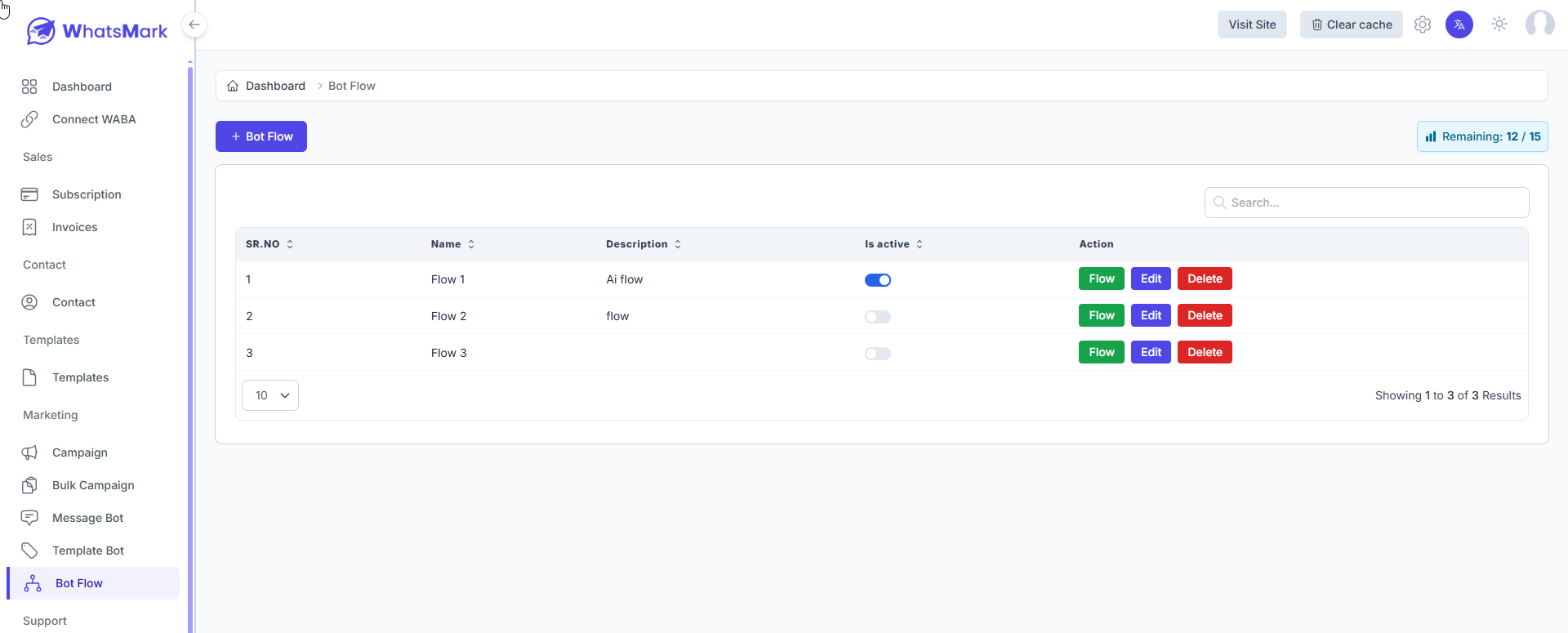
2. Creating A New Bot
After clicking the + Bot Flow button on the Bot Flow List page, a popup appears prompting you to enter details for the new flow.
Bot Flow Creation Popup
- Name: Enter the name of your bot flow. For example,
Customer Support Flow. - Description: Provide a brief description of the flow. Example: "Provide end-to-end customer support for Corbital Technologies' WhatsMark SaaS product."
Click Submit to create the flow and move to the flow builder interface.
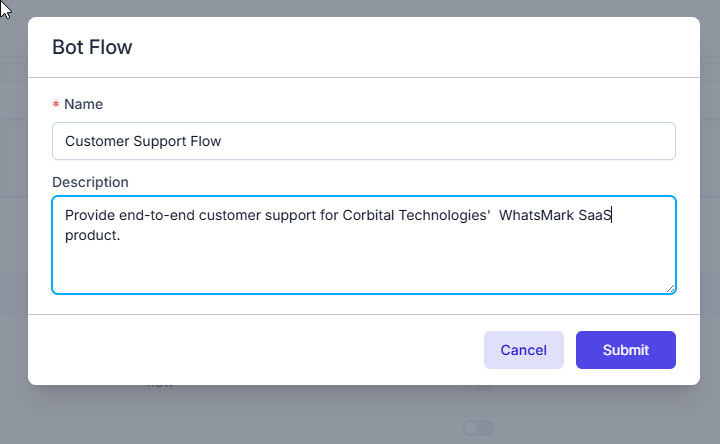
3. Creating Flow
Clicking the + Bot Flow button takes you to the bot flow creation interface.
Interface Overview
Available Components (Left Panel): Components you can add to your flow include:
- Text Message
- Button Message
- Call To Action
- List Message
- Media Message
- Location
- Contact Card
Start Trigger (Center Block): This is the flow’s entry point. You must configure:
- Contact Type: Type of contact who will trigger the flow (e.g., Customer)
- Trigger Type: Trigger condition (e.g., on exact match)
- Trigger Keywords: Keywords users send to start this flow
Save Flow Button: Located at the top right, it activates once mandatory fields are filled.
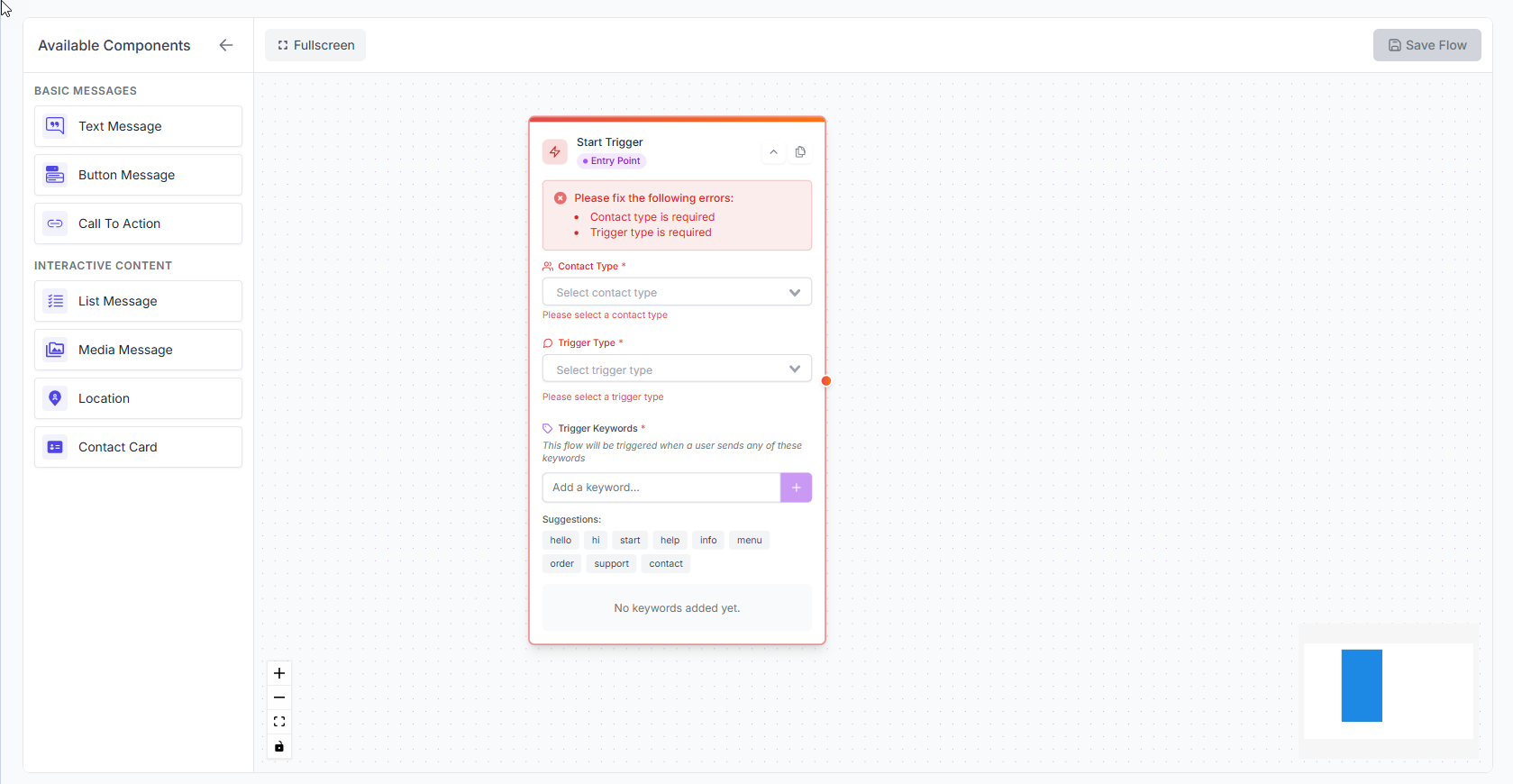
4. Bot Flow Components Overview
Each component can be added to the flow canvas to build your conversation. Below is a summary of the key components:
4.1 Text Message
Used to send plain text messages.
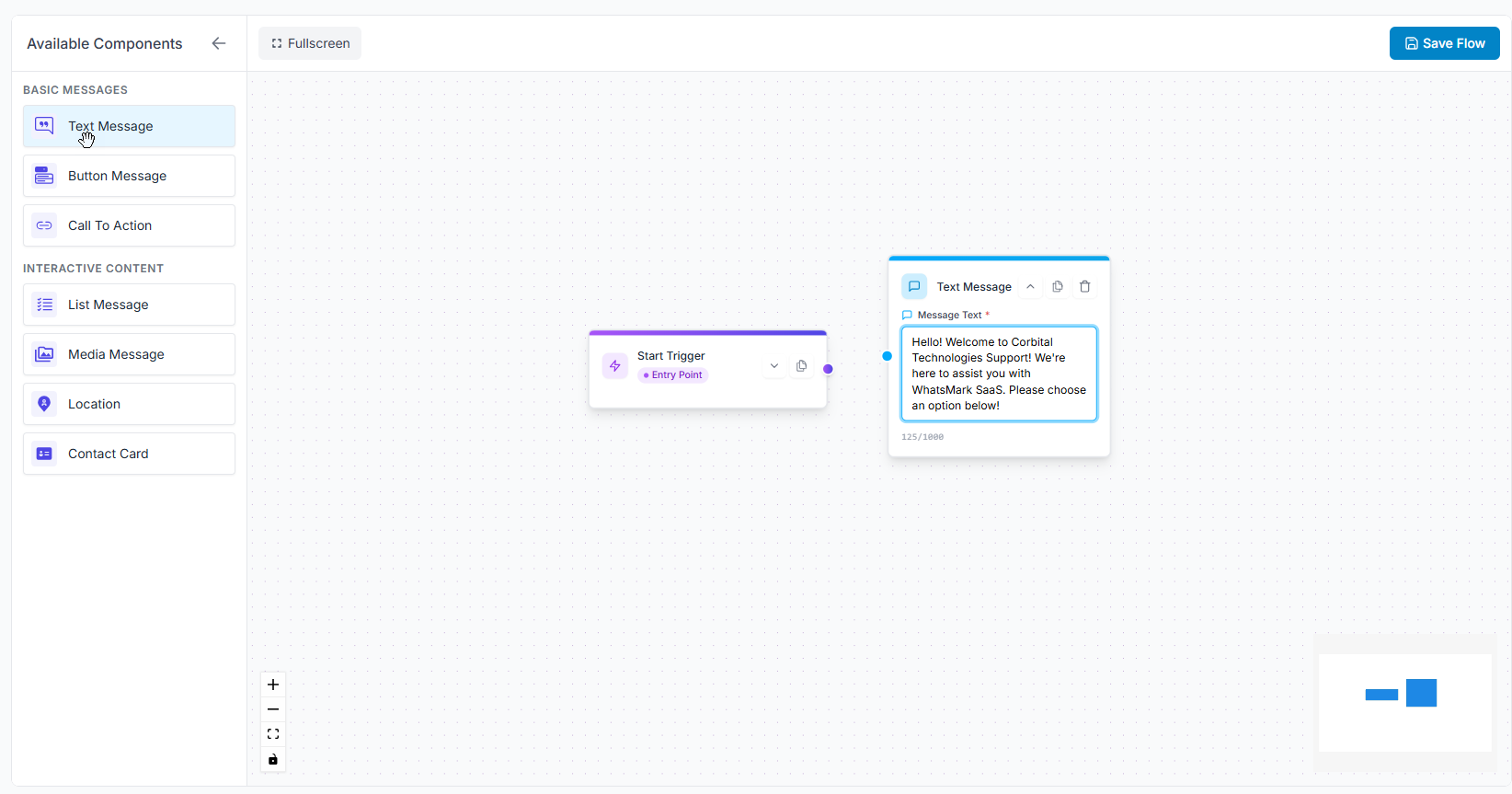
4.2 Button Message
Sends a message with interactive buttons for users to choose from.
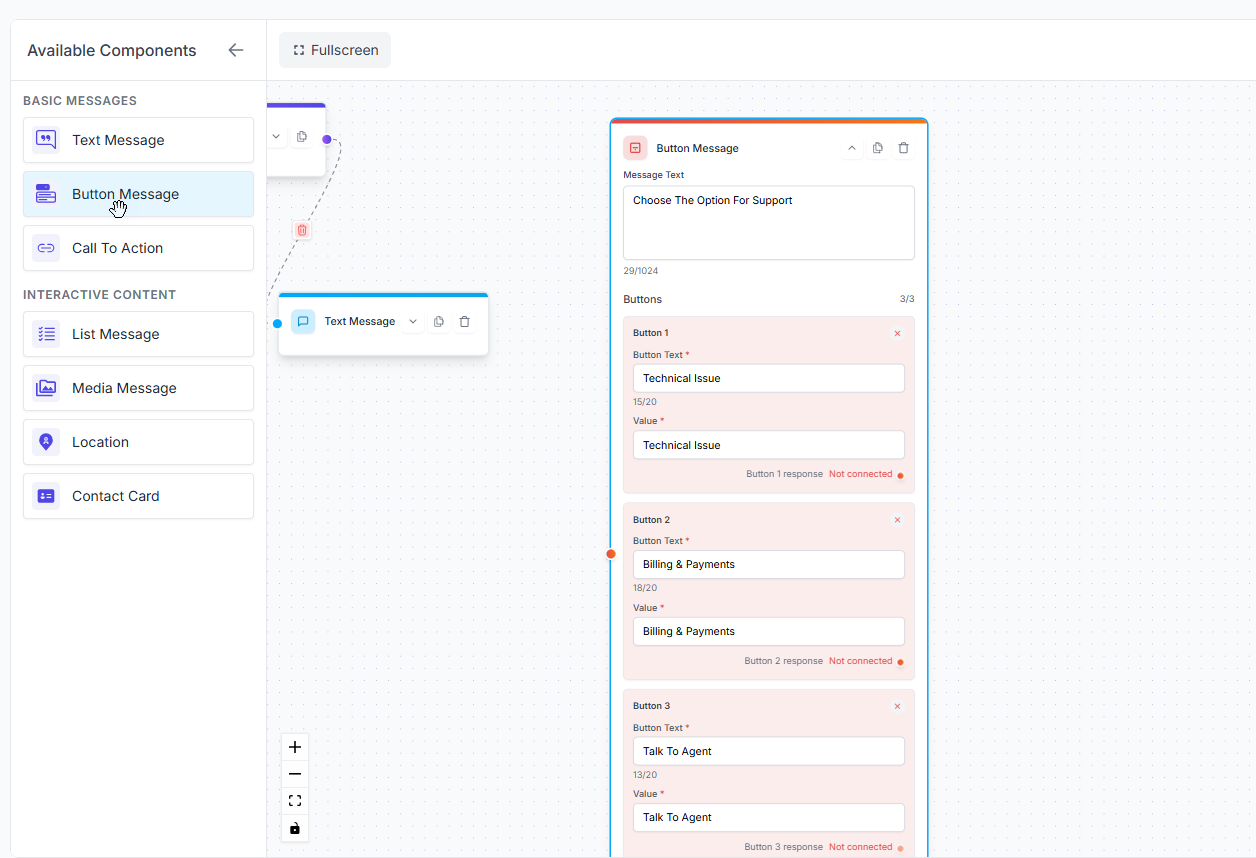
4.3 Contact Card
Shares contact information with the user.
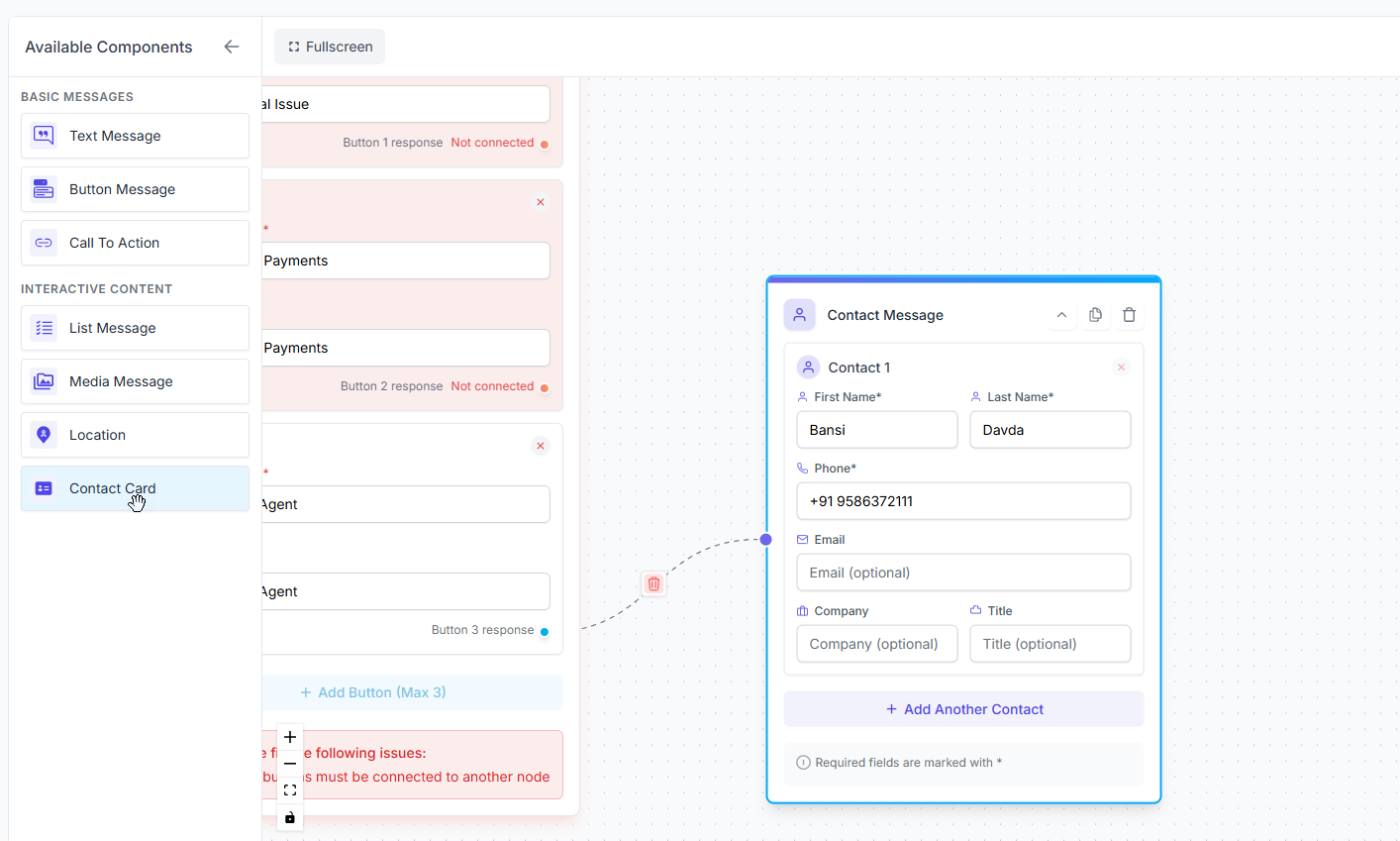
4.4 Call To Action (CTA)
Sends a clickable button with a link for the user to take an action.
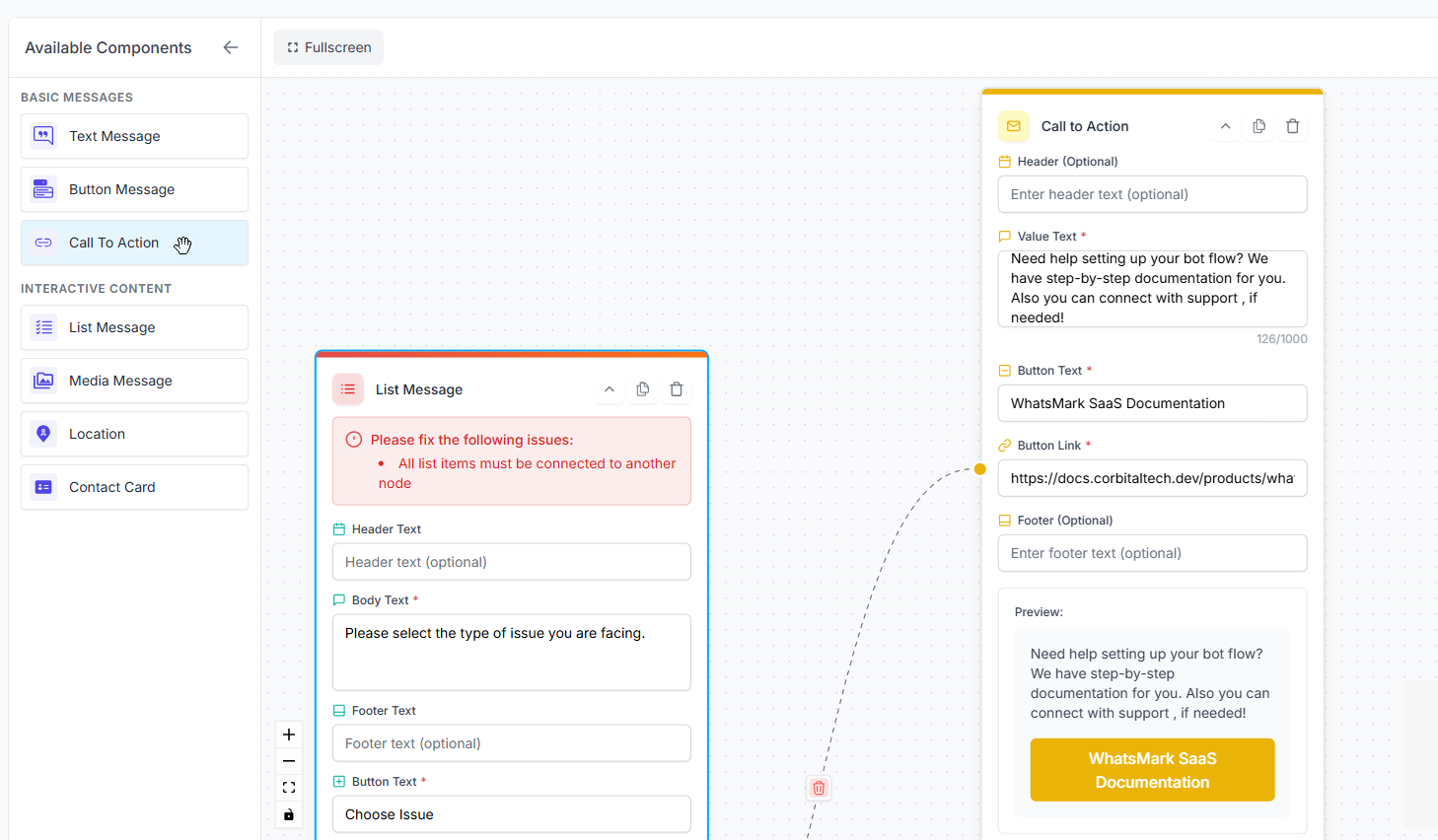
4.5 List Message
Sends a list with header, body, footer, and selectable options.
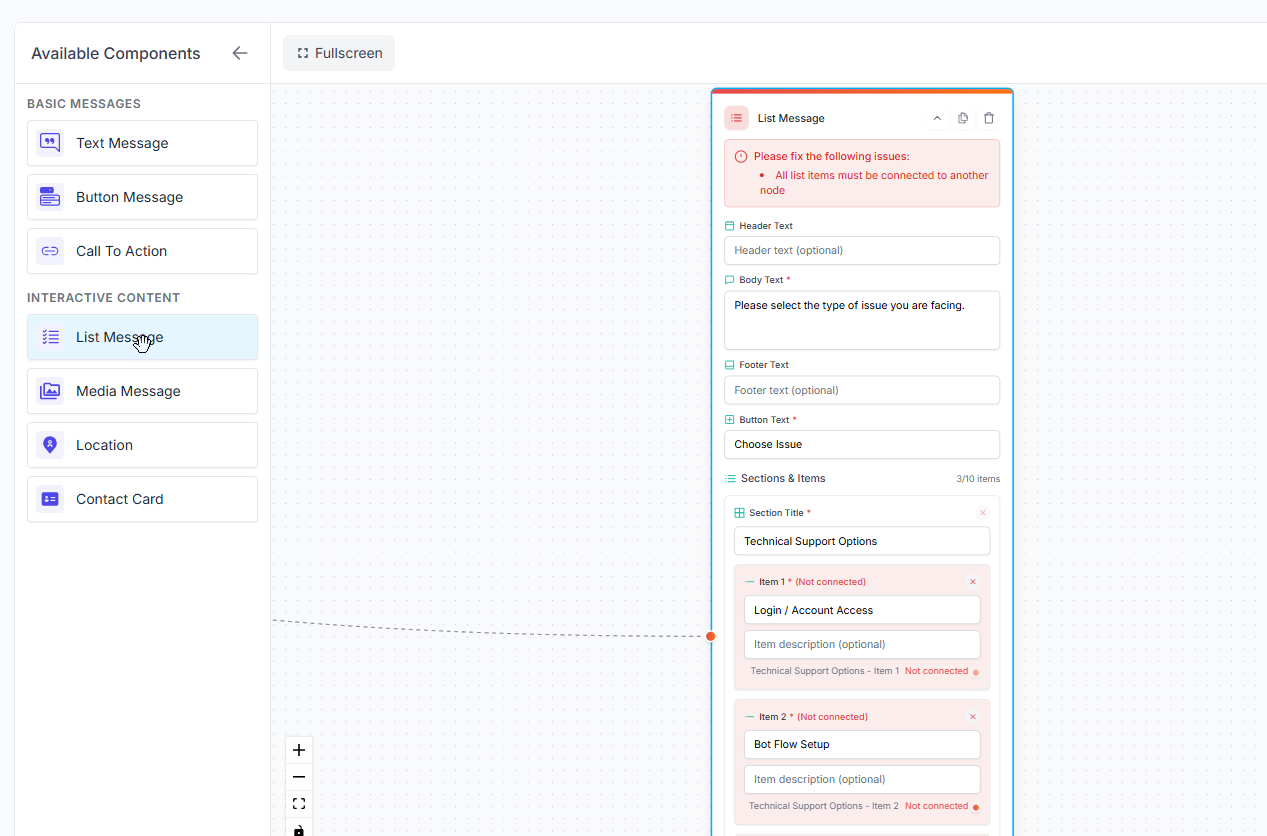
4.6 API Request
Sends data from your bot flow to external sources and automation platforms. This component enables you to push conversation data, user responses, and flow variables to external systems like n8n or any other software that can process and utilize the flow data.
Key Features:
- Request URL: Specify the webhook or API endpoint URL of your external system
- HTTP Method: Support for POST, PUT, PATCH methods for sending data
- Headers: Add custom headers (Accept-Charset, Authorization, Content-Type, etc.)
- Request Body: Send JSON data with dynamic variables from the conversation flow
- Data Integration: Pass user responses, contact information, and flow context to external systems
Common Use Cases:
- Send conversation data to n8n workflows for automation
- Push lead information to CRM systems
- Trigger external workflows based on user interactions
- Submit form data collected during the bot conversation
- Integrate with zapier, make.com, or custom automation platforms
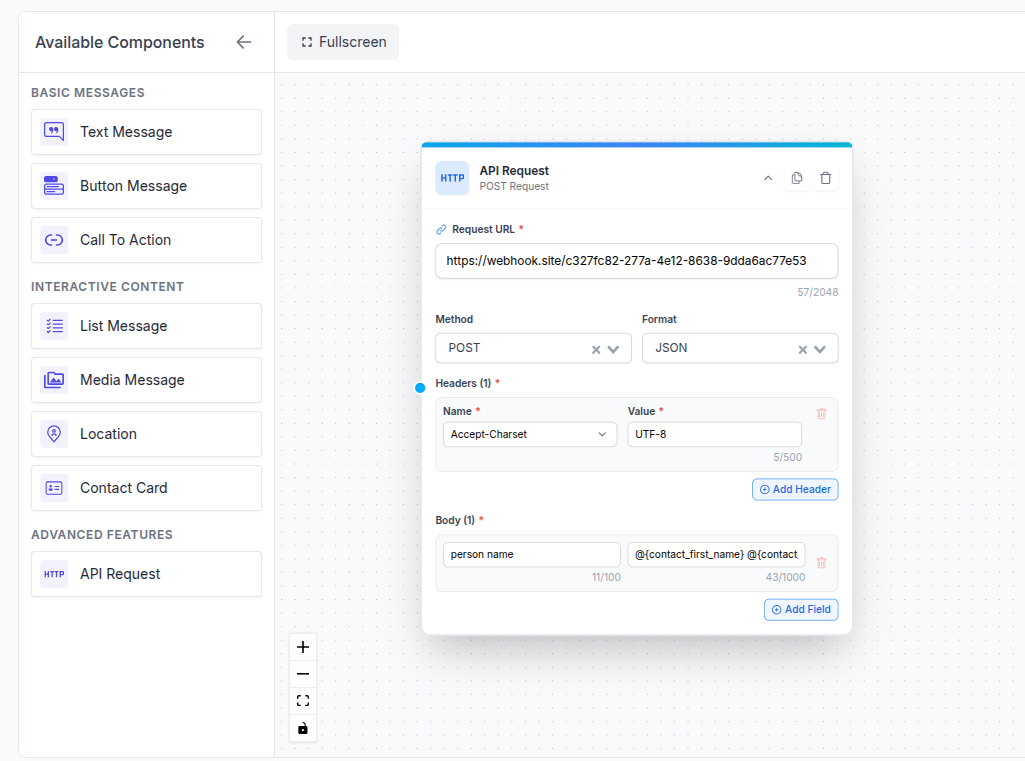
5. Example: Complete Bot Flow
This is an example flow where:
- The start trigger listens for keywords from Customers.
- A welcome text message is sent.
- A button message allows users to choose between "Technical Issue" or "Talk to Agent."
- If "Technical Issue" is selected, a list message with common issues appears.
- A call to action directs users to SaaS documentation.
- An image message shows a bot flow creation screenshot.
- A contact card shares an agent's contact info.
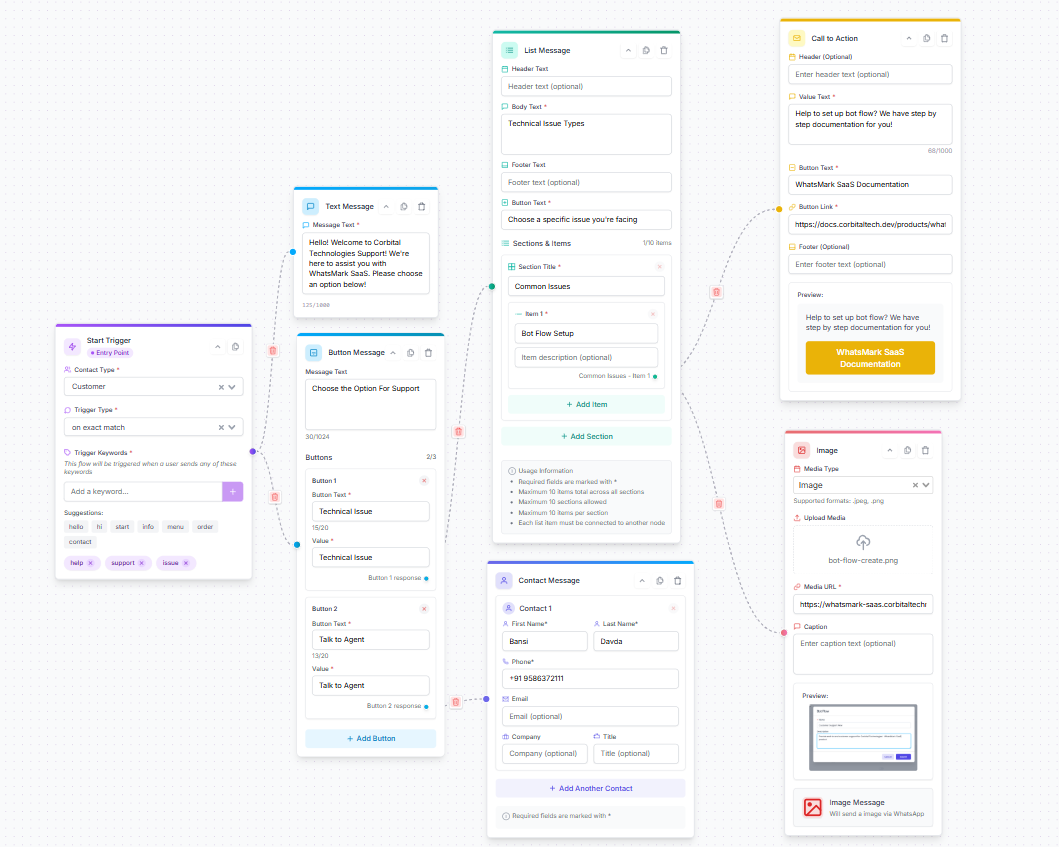
6. Activating Your Bot Flow
After creating and saving your flow, you return to the Bot Flow List page.
- Activate your flow by toggling the Is active switch to ON.
- This enables the flow so it can start responding to user messages based on your triggers.
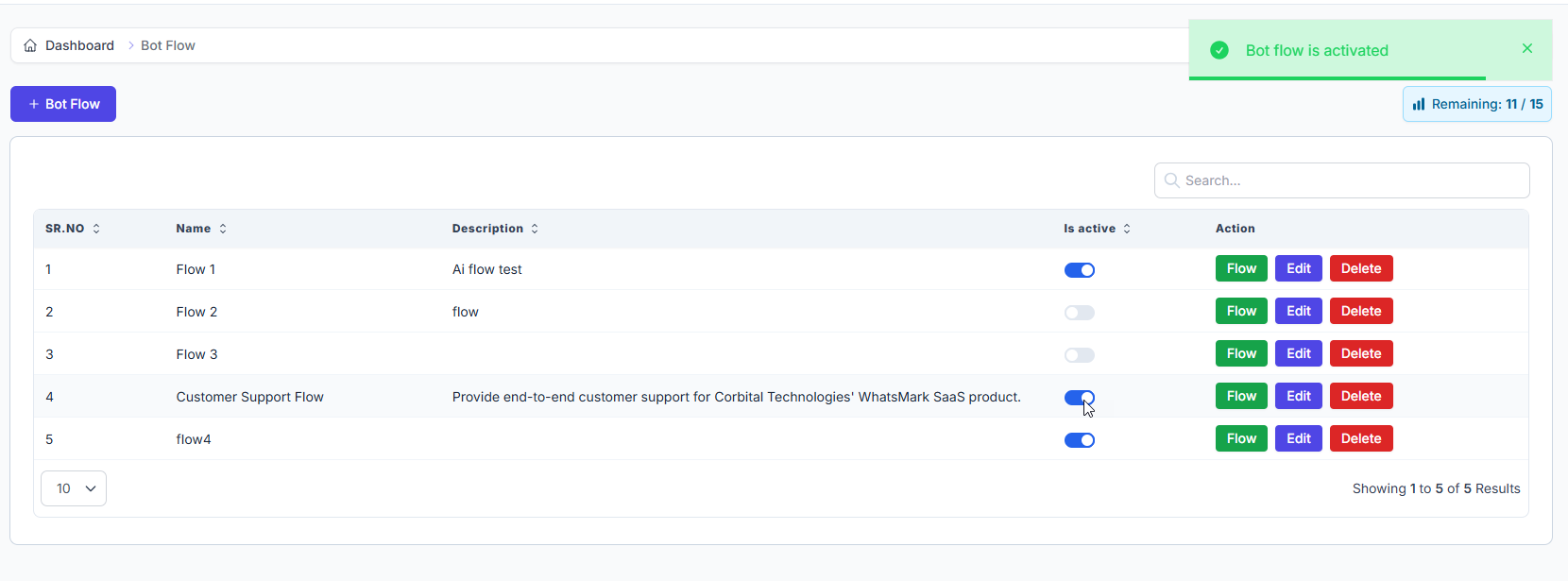
Summary
- Start at Bot Flow List: Create or manage flows.
- Create New Flow: Configure start trigger and add message components.
- Design Flow: Use text, buttons, lists, CTAs, images, and contact cards.
- Save Flow: Make sure all required fields are completed.
- Activate Flow: Toggle the active switch to enable.